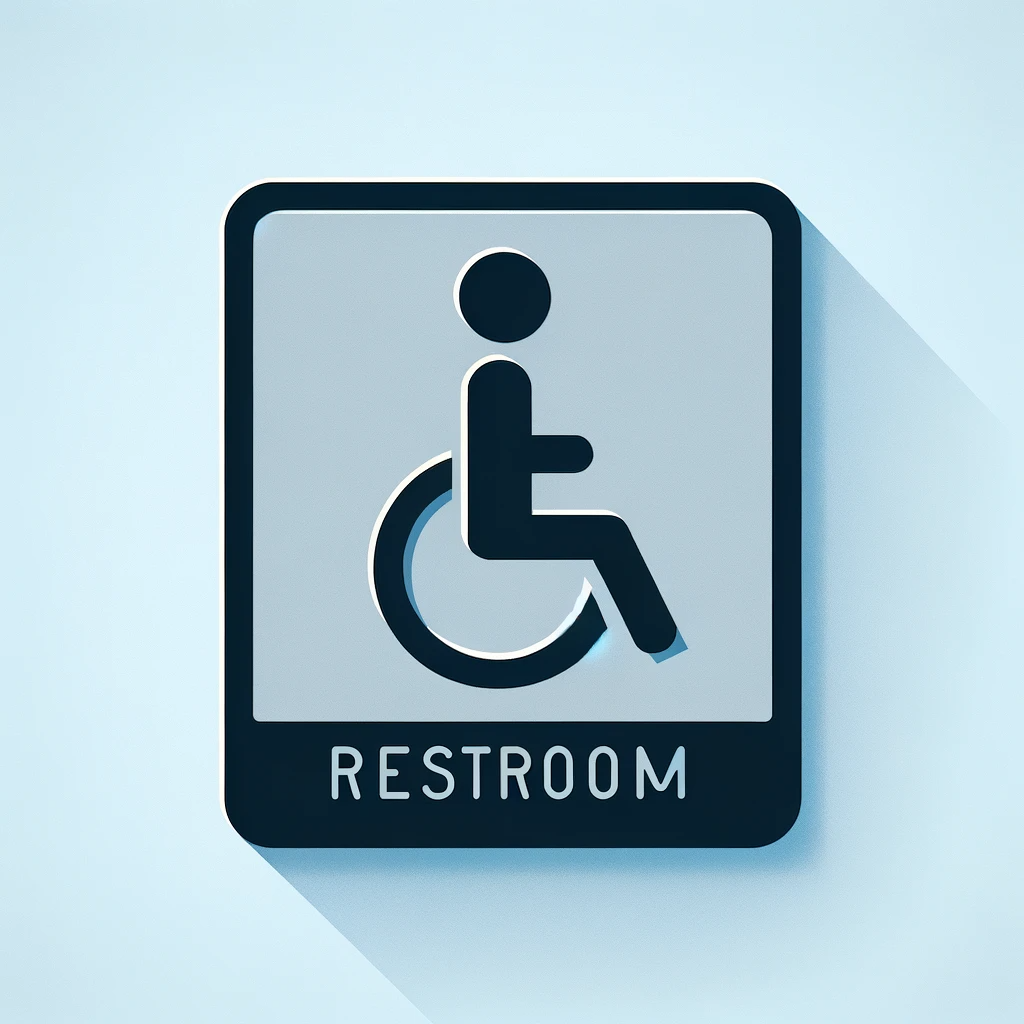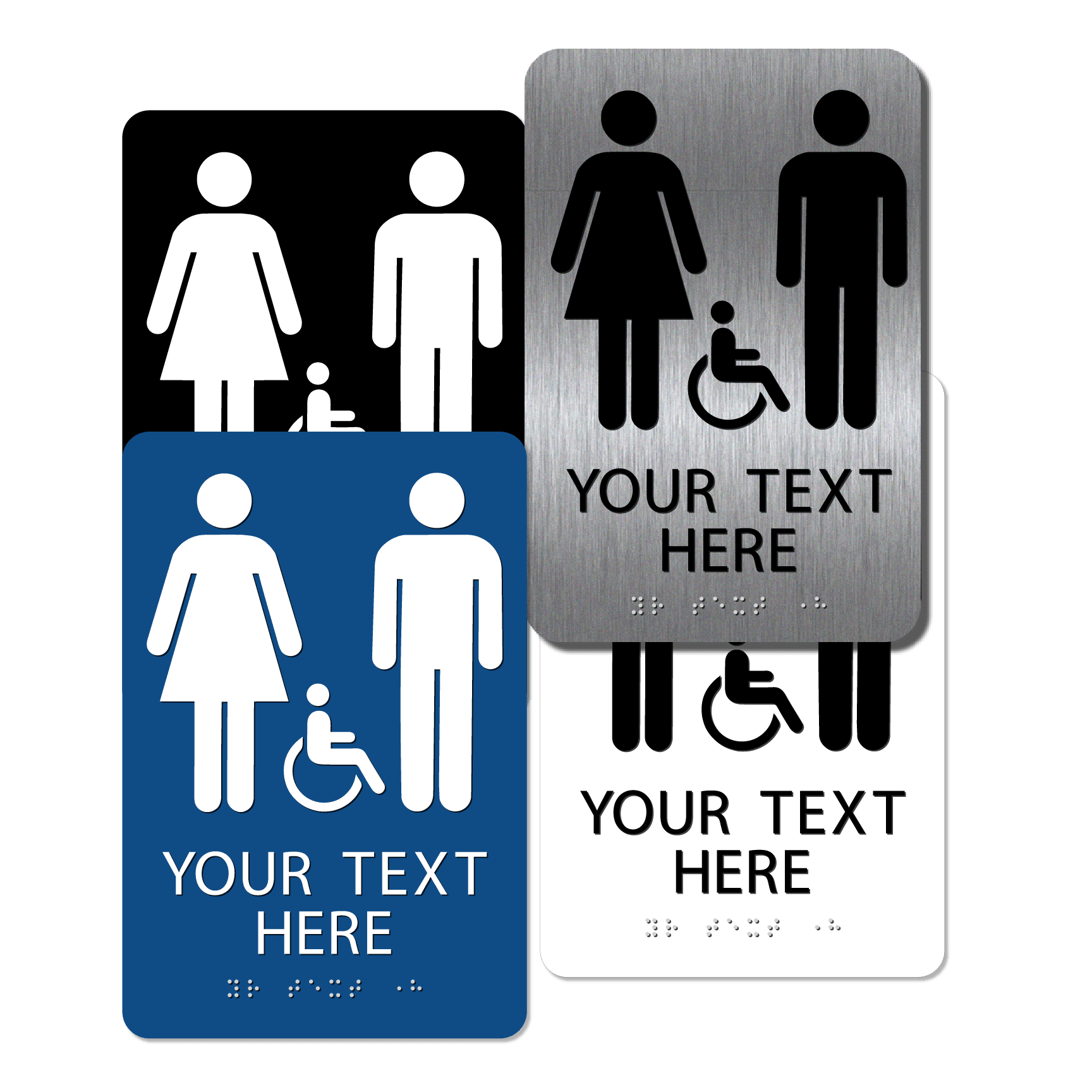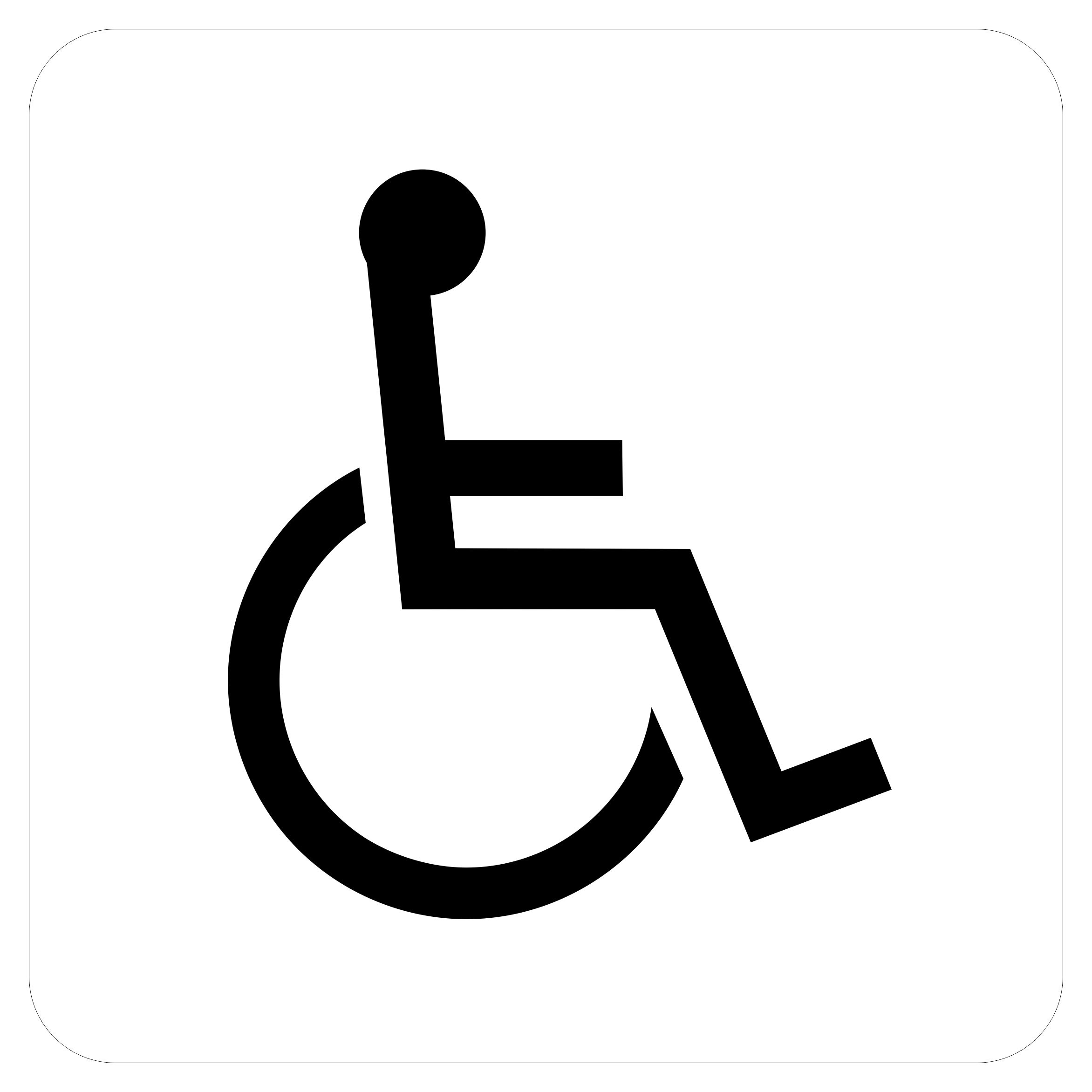Discovering the Secret Attributes of ADA Indicators for Boosted Access
In the realm of availability, ADA signs serve as quiet yet powerful allies, making sure that spaces are inclusive and navigable for people with disabilities. By incorporating Braille and responsive elements, these indications damage barriers for the visually damaged, while high-contrast color plans and readable fonts cater to varied aesthetic needs.
Value of ADA Conformity
Ensuring compliance with the Americans with Disabilities Act (ADA) is essential for promoting inclusivity and equivalent access in public areas and work environments. The ADA, established in 1990, mandates that all public facilities, employers, and transport solutions suit individuals with impairments, ensuring they take pleasure in the exact same civil liberties and possibilities as others. Conformity with ADA requirements not just fulfills legal responsibilities however also improves an organization's online reputation by showing its commitment to diversity and inclusivity.
One of the key facets of ADA conformity is the application of accessible signs. ADA indications are developed to ensure that people with specials needs can quickly navigate via structures and spaces.
In addition, adhering to ADA regulations can reduce the risk of potential penalties and legal effects. Organizations that stop working to abide by ADA standards may encounter claims or penalties, which can be both monetarily burdensome and destructive to their public photo. Therefore, ADA conformity is essential to cultivating a fair environment for everyone.
Braille and Tactile Elements
The consolidation of Braille and responsive components into ADA signs symbolizes the concepts of availability and inclusivity. It is usually positioned below the matching message on signs to make certain that people can access the details without aesthetic assistance.
Tactile aspects extend beyond Braille and consist of elevated signs and characters. These components are designed to be noticeable by touch, permitting people to determine room numbers, washrooms, exits, and various other critical locations. The ADA establishes details standards pertaining to the dimension, spacing, and positioning of these tactile elements to optimize readability and make certain uniformity throughout different environments.

High-Contrast Color Design
High-contrast shade systems play a crucial function in enhancing the exposure and readability of ADA signs for people with aesthetic problems. These systems are necessary as they make the most of the distinction in light reflectance between message and background, making certain that indications are conveniently discernible, also from a distance. The Americans with Disabilities Act (ADA) mandates making use of certain color contrasts to fit those with minimal vision, making it a vital aspect of conformity.
The efficacy of high-contrast colors exists in their ability to stick out in various illumination problems, including dimly lit settings and areas with glare. Commonly, dark text on a light background or light message on a dark history is employed to accomplish optimum contrast. Black text on a white or yellow background gives why not try here a raw visual difference that helps in fast acknowledgment and comprehension.

Legible Fonts and Text Size
When thinking about the design of ADA signs, the choice of clear font styles and proper message dimension can not be overemphasized. These components are essential for making sure that indications come to people with aesthetic problems. The Americans with Disabilities Act (ADA) mandates that typefaces have to be sans-serif and not italic, oblique, script, extremely attractive, or of uncommon type. These demands assist make sure that the message is quickly understandable from a distance and that the personalities are distinct to varied audiences.
According to ADA standards, the minimum message height need to be 5/8 inch, and it should increase proportionally with viewing distance. Uniformity in text size contributes to a cohesive aesthetic experience, aiding individuals in navigating environments successfully.
In addition, spacing between lines and letters is important to legibility. Appropriate spacing avoids characters from appearing crowded, enhancing readability. By adhering to these criteria, designers can significantly enhance accessibility, making sure that signage serves its desired purpose for all individuals, no matter of their visual abilities.
Reliable Positioning Techniques
Strategic positioning of ADA signs is necessary for optimizing access and making certain conformity with lawful requirements. ADA standards stipulate that signs should be placed at an elevation between 48 to 60 inches from the ground to ensure they are within the line of view for both standing and seated people.
Additionally, indicators should be placed nearby to the latch side of doors to enable easy recognition before access. Consistency in indicator placement throughout a center enhances predictability, minimizing confusion and enhancing overall individual experience.

Final Thought
ADA indications play a vital function in advertising accessibility by incorporating attributes that address the requirements of people with disabilities. Incorporating Braille and tactile components ensures important information comes to the aesthetically damaged, while high-contrast color pattern and clear sans-serif font styles boost presence across various illumination conditions. Efficient positioning approaches, such as appropriate mounting heights and tactical places, additionally promote navigating. These components jointly foster an inclusive environment, highlighting the value of ADA conformity in making sure equivalent gain access to for all.
In the world of availability, ADA indications serve as quiet yet effective allies, making sure that areas are navigable and comprehensive for individuals with specials needs. The ADA, passed in 1990, mandates that all public facilities, employers, and transportation index solutions fit individuals with impairments, ensuring they appreciate the very same legal rights and chances as others. ADA Signs. ADA indications are made to make certain that people with impairments can conveniently browse through structures and areas. ADA standards state that indications must be placed at a height between 48 to 60 inches from the ground to guarantee they are within the line of sight for both standing and seated individuals.ADA indications play an important function see here in promoting access by integrating features that resolve the demands of people with handicaps